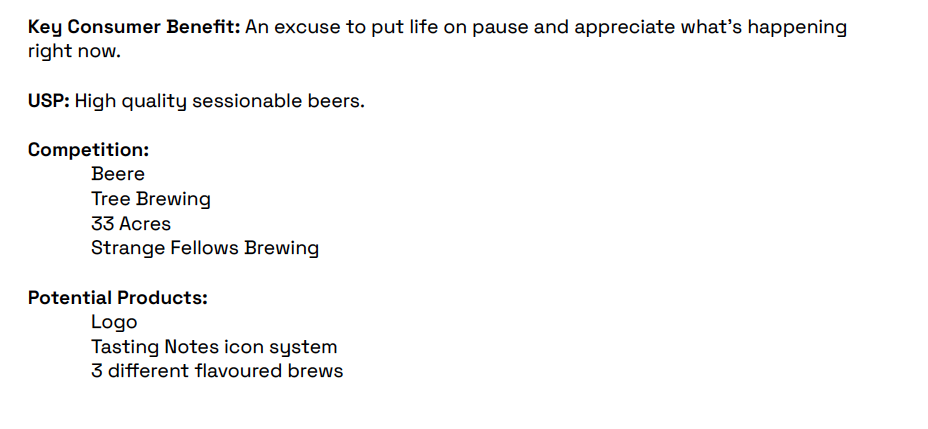I really enjoyed phase one. I found that the most rewarding part was discovering what the most effective way to communicate with my mentors was and how we can fit each other into our work schedules while maintaining steady communication. Additionally, we decided to revisit an old project of mine, and watching the product get re-vamped and take an improved form in comparison to my original second-year execution is extremely fulfilling (I’ve come so far!).
I came out of the research phase with several insights into the beer industry and what to take into consideration while developing a new brand. Including, but not limited to;
- More sessional, lower alcohol content beers are becoming more and more popular
- Craft beers have oversaturated the market.
- People are growing tired of “specialty” beers, as there is so much competition that either
- Everyone ends up doing the same thing
- Everyone tries to out-do each other in a tiring way
- “People-centered beer” brands are going to shoot upwards
- “In 2021, as we recover from the impact of COVID-19, integrate the lessons that the “big pivot” of 2020 taught us, and continue to grapple with polarization and civil unrest, I expect to see industry leaders continue to make groundbreaking strides in welcoming, empowering, and listening to the people that make beer possible.”
- Whiskey is slowly replacing the craft beer in the alcohol lovers bar as a collection item
- With less access to liquor stores and restaurants this year, variety sample packs are growing more and more common
- “…breweries think inside the box, leveraging delivery to diversify their products by offering special holiday gift boxes, mixed packs, new subscription clubs, and more. In 2021, it won’t just be delivery itself that sets the trend. But rather what breweries can put inside the box will be the hallmark of the year.”
- Restaurants are more likely to stock canned brands now, as draught beer access relies entirely on indoor, in-person seatings. With delivery and out door seating being a huge priority at the moment, cans and bottles are the most realistic option.
- 12-pack boxes are getting more and more common:
- “The pandemic brought about a widespread consumer shift to buying in bulk—in toilet paper and beer alike. Drinkers increasingly bought 12-packs of beer, returning to trusted lagers and IPAs. People don’t buy 12-packs of new beers for trial and experimentation, says Bandy of Indeed. “If people buy a 12-pack, it’s something they like at all times of day and occasions.””
- Digital integration to brand storytelling is on the rise with COVID and entirely virtual interaction. Animated packaging, scannable cans, etc allow a new touchpoint with isolated customers
- After quarantine, more non-alcoholic beverages are needed and wanted from customers.
Additionally, Emily and Claire are experts in the beer field, and were able to provide me with more intimate knowledge of the industry and it’s customers. I learned that although stereotypes can be fun to play up, you have to be exceedingly smart with the education so they don’t fall into what I call “Family Guy Territory,” where the brand unintentionally resonates with the group they’re trying to make fun of.
My biggest challenge was resisting my old brief. I found that because I’d had so much distance from the original project, I was resigned to the brand I had created a year ago and was complacent when it came to my original revisions of it. I was attached to something that, although it felt like a good idea to second year Tal, wasn’t as strong anymore and needed to be changed.
Although it seems pre-emptive to give myself on-base research and brief writing while it’s still subject to change (currently awaiting a tone change approval within an approved brief), I’d give myself a 9/10. I came back with some solid research, delved into the industry and its current trends, and after initial feedback, was prepared to completely re-create a brand I thought was settled.

